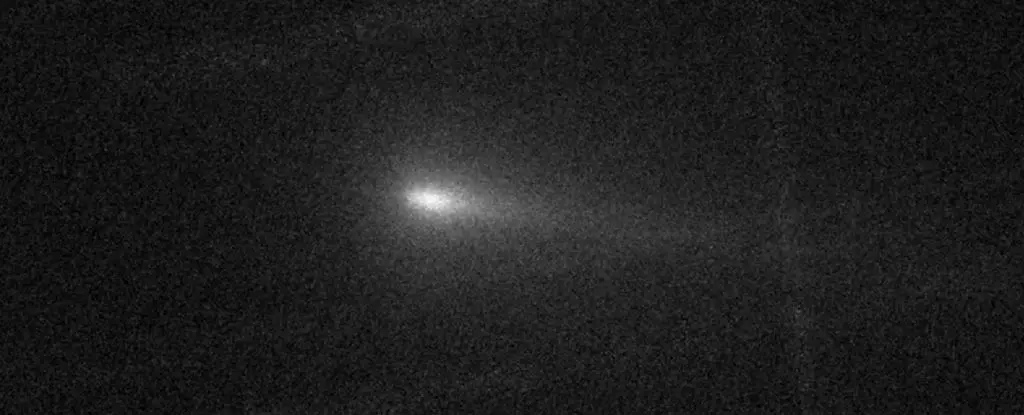In the vast expanse of our solar system, celestial events often leave humanity in awe. Comets, with their captivating tails and fleeting appearances, serve as reminders of the mysteries that lie beyond our planet. One such comet, C/2024 S1, was initially heralded as a spectacular sight expected to grace our skies around Halloween 2024. Discovered on September 27, 2023, this Kreutz sungrazer comet was predicted to blaze a path remarkably close to the Sun. However, recent observations indicate that C/2024 S1 might be disintegrating before it can deliver the expected visual spectacle.
As comets approach the Sun, they reveal their fragile nature, often succumbing to the intense gravitational and thermal forces. The disintegration of C/2024 S1, although disappointing, aligns with a known pattern among sungrazers. Understanding the lifecycle of these celestial bodies unveils the complexities of our solar system’s history, and, disappointingly, for C/2024 S1, its journey towards oblivion adds another chapter to that narrative.
Comets are often regarded as relics from the solar system’s formation—icy remnants carrying invaluable information about its early state. Comet C/2024 S1, like many others in the Kreutz group, is suspected to stem from a larger parent comet that disintegrated centuries ago, in this case, the Great Comet of 1106 CE. Over time, fragments like C/2024 S1 have ventured into orbits that bring them perilously close to the Sun, exposing them to intense heat that leads to sublimation—the transition of ice into gas without passing through a liquid phase.
This process is vital in understanding why C/2024 S1 appears to be fading. Observations leading up to mid-October revealed signs of outburst activity, characterized by sudden releases of gas and dust that can momentarily brighten a comet. However, the current observed dimming suggests that the nucleus may be collapsing inward. Perhaps the more fascinating aspect of this disintegration is that these events are not just mere destruction, but a dynamic conclusion to a long cosmic journey.
The iconic tail of a comet is a sight to behold, and it is often said to reflect the comet’s health. As C/2024 S1 seemingly vanishes, it still leaves a trail of dust and gas in its wake, hinting that not all is lost. Even if its nucleus disintegrates completely, observers may still catch glimpses of a spectacular tail temporarily. This tail is birthed from the very materials that once formed the comet’s nucleus, showcasing the ongoing narrative of transformation and change that defines the identity of these celestial wanderers.
While it may be a downer that the comet may not shine as brightly as initially anticipated, the tail could potentially provide an intriguing observational opportunity for star gazers equipped with binoculars or small telescopes. This creates a unique moment where science and spectacle intersect—viewers can witness material that has traveled billions of years, only to meet a fiery end so close to our Sun.
Analysis of the comet’s outburst provides insight into the instability of C/2024 S1. The observation that it has had at least one noted outburst on its journey raises important questions about why some comets maintain stability while others fracture. The fragmentation often occurs due to the comet’s own rotation, which can accelerate when gases released during sublimation push against its surface. As the forces at play intensify, they may result in a catastrophic breakup—much like what astronomers witnessed with Comet C/2019 Y4 in 2020.
These events reveal the chaotic nature of comets as they venture into the inner solar system. As C/2024 S1 nears perihelion—its closest approach to the Sun—there lies the possibility of further disintegration occurring. Observers await the outcome with a blend of anticipation and hope, knowing that even in its potential demise, the comet reveals the grand story of the universe.
The tale of Comet C/2024 S1 serves as a poignant reminder of the ephemeral nature of existence, celestial or otherwise. As humanity gazes up at the fading comet, we are invited to reflect on the broader universe, the remnants of its formation, and the processes that shape it. The disappointment of an anticipated bright display may linger, but the scientific insights gained from C/2024 S1’s journey towards disintegration enrich our understanding of these celestial phenomena. Whether viewed through the lens of a telescope or simply with wonder, the true beauty of comets lies not just in their brightness but in the stories they leave behind.


Leave a Reply